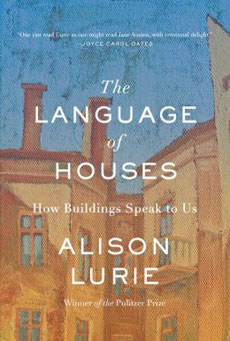Alison Lurie won a Pulitzer Prize for her novel Foreign Affairs. In 1981 she wrote The Language of Clothes in which she probed the connections between what we wear, the ways we see ourselves and our bodies, and the world of fashion. Now in this sprightly and informative work, Lurie takes a broad look at the architecture of our homes, churches, offices, schools, hospitals, hotels, museums, and retirement communities.
We perked up at her first sentence: "A building is an inanimate object, but it is not an inarticulate one." The author proves to be a creative reader of homes, urban buildings, and places of work. For example, in her commentary on the language of houses she covers looking out and looking in, coming and going, light and dark, order and disorder, empty and full, beauty and ugliness, youth and age, and more.
In a section on home, Lurie demonstrates a keen eye for details in her exploration of size and content, simple and complex interior spaces, hearth and home, friendly and unfriendly furniture, and happy and unhappy houses.
What we like best about this ambitious book is that it offers a mini-course to get us started doing spiritual readings of buildings. By the time you finish The Language of Houses, you will be able to sense the greed swirling inside any McMansion that you visit; you will be patient with a friend whose living room furniture consists of austere and incredibly uncomfortable chairs; you will wince at the dimly lit room at a nightmarish exhibition hall where you need three sweaters to be warm; and in a hospital room; and you will be stunned by the high level of noise which makes it nearly impossible for patients to sleep and regain their energy.
Each of these examples reveals what our buildings are telling us about our society.
